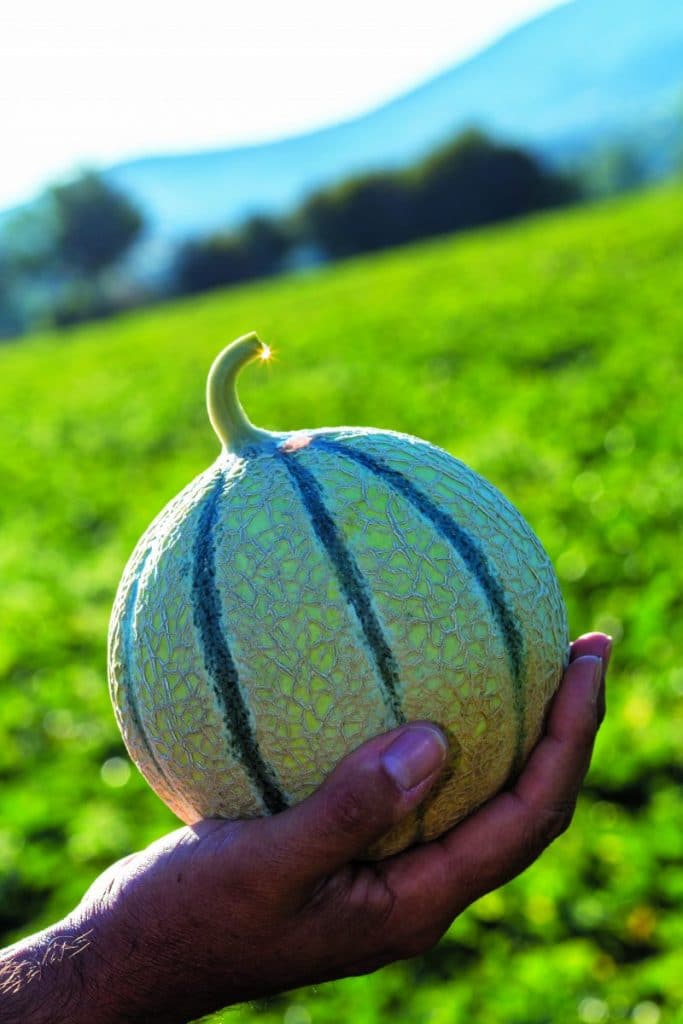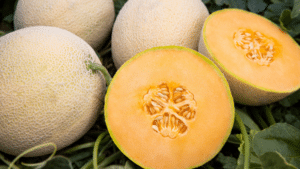A closer look at melon breeding in Europe
Melons are not only healthy, but come to us in many different types and tastes. To get a better grasp of the diversity and a closer look into the plant breeders kitchen, European Seed dove into the colourful world of melon breeding with Maarten den Hertog, melon breeder at Rijk Zwaan; Bruno Foncelle, Global Breeding Lead Cucurbits Syngenta; Pedro Pleguezuelo, EAME melon portfolio manager for Syngenta; Ralf Kuijpers, Cucurbits research director at Enza Zaden; Frank de Langen, Melon Breeding Coordinator and Melon Breeder at HM Clause; and Tony Chartier, Product Manager EMEA for orange flesh colours melon for HM Clause.
European Seed: Do certain regions in Europe require a different type of melon?
“Definitely. Traditionally each region had its preferences for each melon type, but some of these habits are changing slightly,” says de Langen. “In order to offer melon over a longer period or even all year-round, melons are being produced outside their traditional growing area. Not all the melon types that are grown are consumed in the growing area (Spain, Morocco and Senegal). Charentais, Italian Netted types, Yellow Canary, Piel de Sapo, Galia and Ananas types are the main breeding targets for melon in Europe for HM.CLAUSE.”
Den Hertog concurs. “Most countries have their own favourite melon type, but sometimes you see some general fluctuations in popularity. Piel de Sapo melons are getting increasingly popular in Europe, Galia type is losing some marketshare. In general, the orange flesh types are becoming more popular. At Rijk Zwaan our strategy is to keep a broad assortment. We develop a wide range of melon types, and for different production regions. We do this on breeding locations in France and Spain, so we can play into local conditions and demands.”
Pleguezuelo agrees. “Certainly yes, different countries and regions require different melon types and this is very much linked to the traditional consumption in those places. Clear examples are: Charentais melons, required mostly for France, Piel de Sapo for Spain, Galia and Yellow Canary for Northern Europe, etc.…”
Kuijpers added that traditional melon growing and consuming areas such as Spain and France have their own specific melon types. “In these areas the consumers have very defined preferences. In the more northern areas we can see more melon types, like Galia, Amarillo and cantaloupes with a less pre-defined fruit model.”

(Photo: Manuel Garcia Mejillas, Enza Zaden)
ES: How important are taste and flavour?
Den Hertog believes taste is important for all of these different types, but it is a complex topic. “For instance, when melons are imported in a country that produces melons itself, the perception can be that ‘the taste is probably less than the local ones’. Furthermore, the presentation of a melon also influences the taste experience. In general, a good taste must always be combined with an adequate shelf life. After all, the consumption of melons strongly depends on the weather. One way or the other, there is always some buffering in the logistical chain. Even when the transport distance is limited, you need a good shelf life. Especially with aromatic melon types, every day counts. To summarize, we find taste very important, but we cannot separate it from other important breeding goals.”
Chartier considers flavour a crucial trait in their melon programs: “… but it is very complex as flavour is a multisensorial experience of which taste is only one of the parameters. Around 50 to 500 volatile compounds are involved in melon taste, and HM.CLAUSE is focused on maintaining the distinctiveness of the traditional types (Charentais, Spanish melons, Ananas….) as opposed to prioritizing sugar content and shelf life over taste.”
Kuijpers says taste is indeed crucial. “Marketing research has shown that a not-satisfied consumer will not buy another melon for at least two months. We focus a lot on taste, the ratio of the different sugars and acids being key in our breeding program. But it is not all about the perfect tasting melon, we would rather develop a melon variety that always has a good taste than a perfect tasting melon but more difficult to grow or to ship.”
ES: How do you measure flavour?
De Langen says he measures flavour by physical-chemical analysis. “Actually, some of the ‘physical’ parameters of flavour in melon can be measured quite easily and consistently (pH meter, refractometer, penetrometer, texture meter and chromameter).” Chemical analyses are needed for aroma profiling and understanding of the diversity in aroma profiles. “Finally, consumer panels are needed to check which attributes we need, to have the highest consumer’s satisfaction/likings.”
Den Hertog says the Dutch Wageningen University has developed an independent model for measuring taste. “It connects functional aspects like sugar content, firmness and juiciness to how the fruits are valued by a consumer.” He adds that their breeders use this model to compare varieties. It helps them to make choices in their selection work.
Foncelle underlines that taste and flavour are crucial and states they “measure flavour by using consumer or expert panels and with biochemical methods.”
ES: How has the yield increase been over the past years?
Yield is almost always the number one priority, says Kuijpers. ”Except for some niche products, a grower will not grow a variety with a very good taste if it does not reach a minimum production level. The other way around is also true, a very high producing variety with a bad taste will not be accepted in the market. Melon is a species with only a limited number of fruits per plant. To increase the yield we should try to get an extra fruit or increase the size per fruit. The latter is not feasible as market demands are strict on size. So we try to get an extra fruit per plant. Steps have been made but that is difficult to express in percentages.”
Pleguezuelo agrees, stating both yield and resistance are equally important, and farmers should find a safe and friendly variety to grow those good quality melons, which are productive enough for a profitable business. “How much the yield has increased is quite difficult to answer precisely as commercial yields are quite variable and very sensitive to climatic conditions,” says Pleguezuelo. “Through a good knowledge of the varieties and applying the technologies in a correct way, many farmers have been able to increase yield by 15 to 20 per cent in these last 10 years.”
Den Hertog explained that next to taste and shelf life, efficiency for the market is something that needs to be worked on. “A good product costs money, so our challenge is to keep the taste on a high level, and at the same time to increase efficiency. We do this, for example, by improving fruit setting, so we can increase the yield per square meter. And also by improving the so called field flexibility of the crop. If a grower needs less cycles to harvest all the fruits of a certain field, it saves him a lot of labour.”
Chartier states, “We are looking at optimizing commercial yield components for grower and shipper: harvest uniformity (size classes), harvest window (days), harvest concentration, quality stability. There are regional differences, which depends on slots, growing conditions, and disease and pest pressure.”
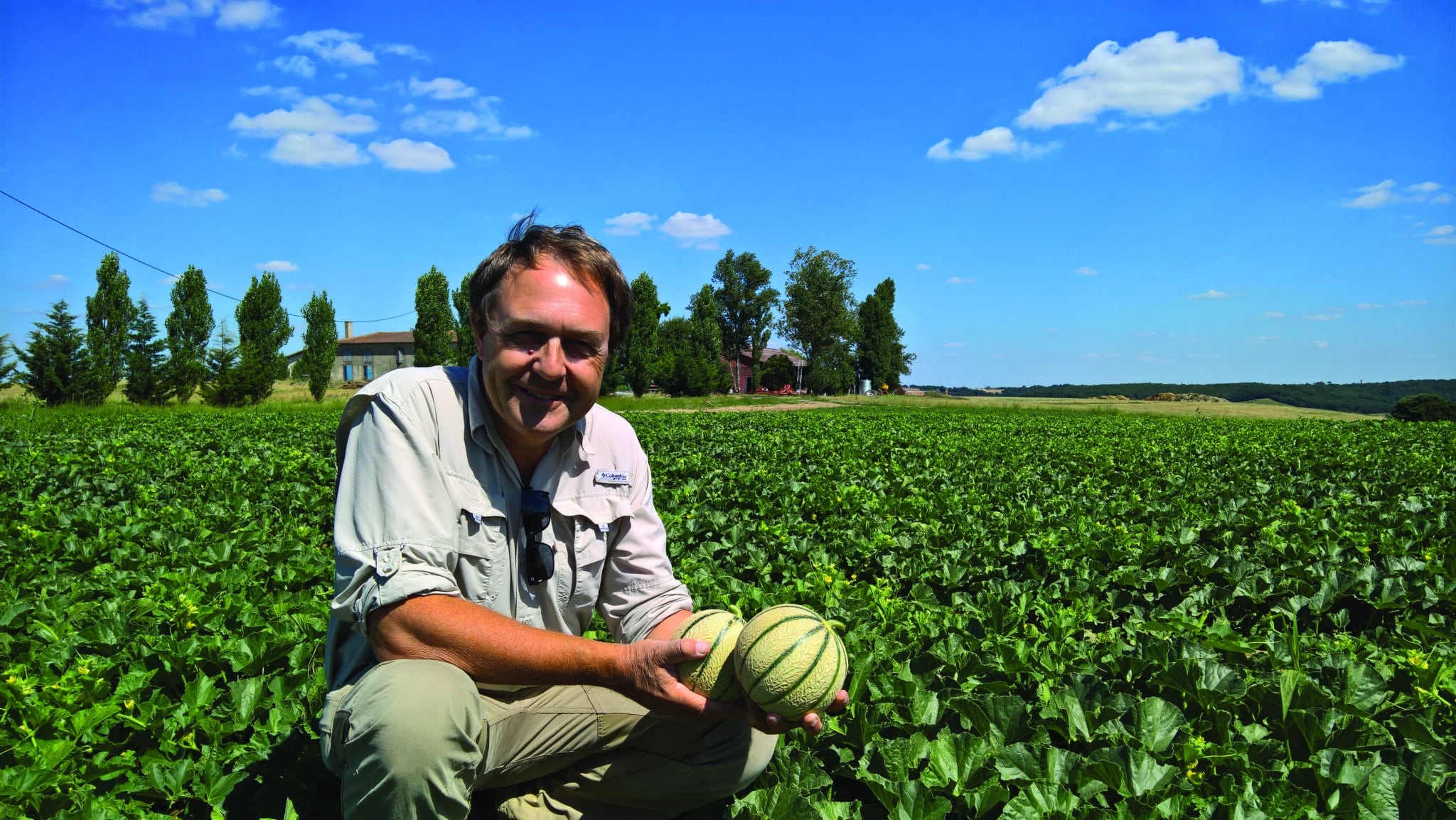
ES: How important are disease resistances?
All breeders agree that Fusarium and powdery mildew resistance are basic and essential in modern melon varieties, and add that resistance to diseases and pests are an integral part of the components that benefit commercial yield by giving a better yield security, lower waste and a better fruit quality.
Kuijpers explains that new problems are insects and insect-transmitted viruses. Recent problems with white fly transmitted viruses like Cucurbit yellow stunting disorder virus (CYSDV) and Tomato leaf curl New Delhi virus (ToLCNDV) receive considerable breeding resources.
Chartier says resistances are “equally important to other traits involved in yield, such as root strength, vigour, plant cover, fruit set and fruit size distribution.“
Den Hertog agrees, as because of the intensive use of the agricultural land in France and Spain for melons, the risk of a soil disease like Fusarium is relatively high. “To develop the necessary resistances, we have a high-tech phytopathological centre at our disposal close to our head office in De Lier, The Netherlands,” he explains. “Moreover, we have local facilities for disease testing at our melon breeding locations in Spain and France. This enables the melon teams in these countries to be quick and flexible in terms of practical research. “
De Langen: “For us, the most important diseases resistances are:
- Fungi: powdery mildew (6 races), Fusarium oxysporumsp. melonis (4 races), Scab and Gummy Stem Blight (GSB).
- Viruses: Melon Necrotic Spot Virus, Cucumber Mosaic Virus, Watermelon Mosaic Virus, Zucchini Yellow Mosaic Virus
- Pests: Aphid (Aphis gossypii)
- Bacteria: Pseudomonas syringae aptata
For this we want to create disease resistance packages according to growing conditions (e.g. for the French market we are offering varieties combining resistances to Powdery mildew race 3-5, Fusarium oxysporum race 1-2 and Aphis gossypii. We are also working on ‘new’ diseases and pests like new races of powdery mildew and Fusarium oxysporum race 1-2. “
Also, Chartier is adamant about packaging the resistances. “Disease resistances combined in packages (e.g. Powdery Mildew/Fusarium oxysporum melonis 1-2 and Aphis gossypii resistance) in the new genetics must deliver significant improvement for tcrop management. Field-holding, to limit the picks, broad adaptability and shelf life improvement are some others traits focused to limit the growers economics.
Foncelle says the main steps for developing a melon variety are: the creation of variability; parental line development and fixation; crosses to make many hybrid combinations for testing. “Then we go through what we call early stage selection and hybrid late stage selection.”
ES: And what about shelf life?
De Langen states shelf life is a very important trait in melon. “Originally, most of the cultivated melon types were climacteric, which means that at maturity they had a peak in ethylene production that triggers a specific post-harvest behaviour: high aroma, but low shelf life because of loss of firmness, internal flesh breakdown, changes of external colour, loss of sugar, etc.” he says. “Breeders have introduced shelf life genes from exotic germplasm in cultivated materials since the 1980s. Most of these genes are involved in ethylene metabolism/perception in fruits, blocking partially or completely ethylene production or perception and generally low aroma/high firmness/high sugar. By choosing the right combination of genes, it is possible to create a range of shelf-lives, according to grower/shipper’s needs: long distance shipping (one month or more) to medium/short distance (one week), but with sufficient aroma for the consumer.”
Pleguezuelo feels the same way, adding shelf life is a “very important trait for traders and also for consumers. A good balance between eating quality and shelf life is absolutely key.”
Kuijpers also agrees. “Melon can be found year-round in the shops, but the main growing areas are not able to provide a year-round product. So in the off-season the product comes from Central and South America. To survive the journey, shelf life is crucial.”
ES: Most of the modern melon varieties are hybrids. Does this provide you with any specific challenges or opportunities as compared to breeding OP melon?
Foncelle says breeding a hybrid variety is providing us with more opportunities to combine traits in a single variety as compared to the development of an OP variety.
Chartier adds that nowadays, nearly all commercial melon varieties are F1 hybrids. “Open Pollinated (OP) varieties are still grown in some areas in North Africa and Turkey, but gradually they are moving to hybrids as well. HM.CLAUSE develops only F1 hybrids.”
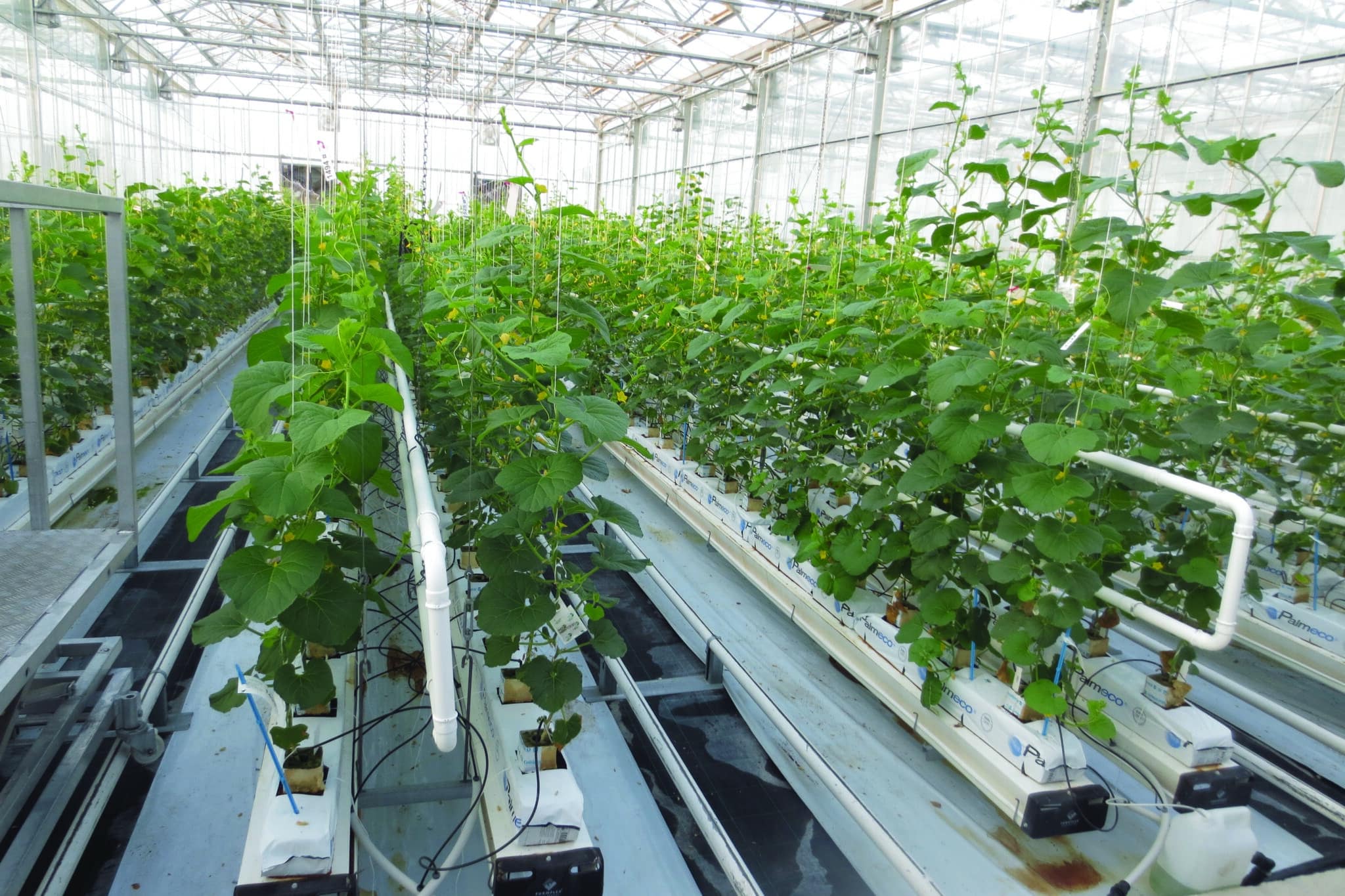
ES: What are the main breeding targets?
Den Hertog states that with breeding, “there is still a lot to win in terms of efficiency. Imagine that we can increase the shelf life from fresh cut melons seven to 10 days or that fruits can be transported and stored at a temperature of 8 degrees instead of 4 degrees.” Den Hertog says this would mean enormous advantages in the logistic chain; it could improve financial results for the market and decrease food waste at the same time. “The convenience market is still important for melon. During the financial crisis there was some stagnation, but now we see a steady growth again. A specific point of attention for the fresh cut segment is the shape and size of the seed cavity. Processors prefer a round and small seed cavity, so they lose as little flesh as possible when cutting the fruits automatically in their machines.”
Foncelle adds that for Syngenta, the main breeding targets are biotic stress resistance, fruit quality and taste, as well as fruit shelf life. For Enza Zaden, the main target can be described as reliability.
“We aim to breed reliable varieties for the whole chain,” Kuijpers says. “For a grower that means adapted varieties with a broad resistance pattern and good production, for the distribution and retailers chain it is shelf life and for the taste.”
ES: How do you as plant breeder innovate?
The genetic diversity of melons is enormous, according to Den Hertog. “This diversity comes from the many varieties that have been developed over the years by human selection, and we complement this with wild plant material that nature still has to offer and that we collect during collection trips together with gene banks. All of the different types can be crossed, so we can make many combinations in terms of fruit flesh, skin and size. Of course we listen to the market, but as breeders you sometimes have to try something new and unexpected. We have a lot of creativity in our team. Some of our breeders work on so-called semi-finished products and send them to colleagues in different parts of the world, so they can bring innovation to the local market. In this way we try to develop the category and to increase the worldwide consumption of melons.”
For de Langen, innovations are related with shortening the time of line selection and the speed to market/efficiency of breeding. “But also with the efficiency of selection and understanding of the important traits. For that we use marker assisted selection or even marker assisted breeding, which will improve the selection and prediction of hybrid performance and stable expressions in different environments. At the same time, we like to stack disease resistance packages and novel traits which will increase yield and yield/quality stability.”
De Langen continues: “To give you some examples of innovative HM.CLAUSE varieties, we were aware that the Spanish market was lacking of a Galia early season variety, combining better shelf life with a good taste, so we developed the variety BRISA. Also in Spain, there was a demand for a Piel de Sapo type variety adapted to early sowings in the greenhouse to start the season, which led to the development of variety VALVERDE. And the French Charentais market was suffering from uneven fruit quality, and to solve that we created the ANASTA variety.”
Den Hertog explains that at the same time we know more and more about the DNA structure of the plants, the complete genome of melon is known and we now have some markers. “This enables us to raise the standards of the main varieties in the market. To make a very strong variety even better, we do not need to start all over again, but can sometimes add a desirable trait very accurately. It is still done by classical breeding (crossing and back crossing), but the genetic markers make it possible to work in a very targeted manner.”
At a moment where plant breeding has arrived in the era of molecular breeding, Kuijpers shares that Enza Zaden “invests heavily in technology development and implementation in our breeding programs. Ever more molecular breeding tools become available for breeders. This will help us breeding for complex traits such as yield, plant architecture and adaptability.”
Foncelle provides an example. “One good example of innovation and connected to the genetic diversity is our melon ‘Gwanipa’, already in the market for some years and present in the stores of some innovative retailers.”
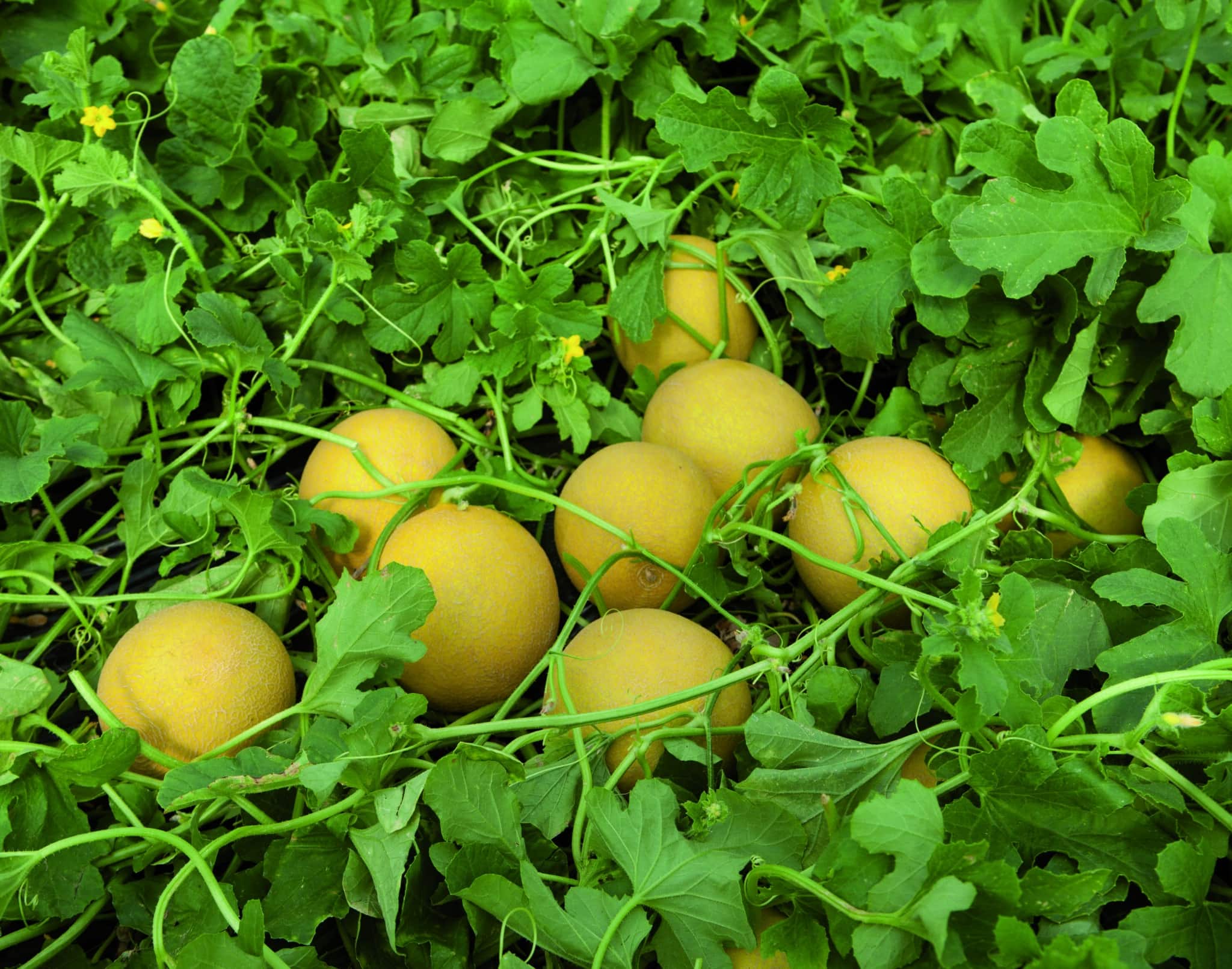
ES: What is your biggest challenge?
Melon is technically challenging to grow, says De Langen, “… because it is very sensitive to environmental and growing conditions. That means that we have to evaluate lines and hybrids in numerous trials and conditions. Moreover, fruits are harvested in a narrow window of time (five-10 days) and they have to be picked at the mature stage to have marketable quality. Trial visit planning in a large trial network has to be done very carefully to have meaningful evaluations!”
Kuijpers adds that his biggest challenge is breeding for flexible or adaptable varieties. “Some varieties do well no matter where you grow them or what crop management they receive. These are very adaptable varieties and are of great value for a grower, especially for an open field crop like melon where a grower cannot control the climate. What makes a variety adaptable is very difficult to define in straightforward breeding objectives and thus difficult to achieve,” he says.
Foncelle clarifies that for him, the so-called ‘speed to market’ is the biggest challenge, which means the time to bring the product to the market as soon as possible in order to answer as best as possible the market needs of farmers, traders and consumers.
ES: Roughly speaking, which kind of investments in time and money does it take to develop a new melon variety?
Kuijpers explains that starting from scratch, it will take about five years to develop a melon variety. “But you need to add to that at least two to three years to introduce a variety in the market.”
Foncelle concurs, explaining to develop a new variety is a long-term process that takes about seven years.
ES: With all these different melon types, how do you as a breeder make sure that your future products are aligned with what the growers and the consumers want?
Chartier explains that product profiles are realigned at least every five years. “They list all the requirements for a commercial product of each melon type by market slot and even sub slot.” Breeders have to anticipate the market while developing a new melon variety, which takes six to eight years.
Den Hertog states in order to develop market oriented varieties, “we are not only in close contact with growers, but we also work closely together with other players in the chain. For instance, we are now doing projects with a number of processing companies in which we try to predict shelf life. By testing our melons in exactly the same way as processors do, we are able to develop the varieties that they really need. In general you could say that our work is getting more and more complex. We have more and more knowledge at our disposal, and at the same time the demands from the market are getting higher and higher. Every step in the chain has its own demands and the only way to play into this is by collaborating intensively with our international partners.”
Kuijpers also feels the challenge. “At Enza Zaden we try to work very close to the market to capture opportunities in an early stage. At the same time we have defined a set of essential traits that have to be widely present in our programs so we have a solid base to develop new products.” And Pleguezuelo adds: “We regularly meet customers and growers and we get feedback from our marketing colleagues to define the characteristics of the future products.”
ES: Creating diversity for your growers and customers is of course very important. Where do you go to find the necessary germplasm that will help you in your breeding work and what are the main sources of your diversity: mainly commercial varieties, or also landraces and other species?
Chartier explains they have a dedicated pre-breeder who deals with the discovery, description, maintenance and making available the necessary genetic diversity for the melon breeders. “Genetic resources for interesting traits can be very diverse: wild ancestors (C. melo), our legacy genetic resources (Clause and Harris-Moran), accessions from other unrelated cultitypes or from the same cultigroup. It can also be heirloom varieties (landraces), historical varieties (OP or F1 hybrids), recent varieties, or specially created populations to create new variation.”
Melon is a ‘noble’ product for European consumers who are attached to specific attributes according to their countries, areas, and eating patterns, says de Langen. “The consumers pay specific attention to shape, size, skin and flesh color, and all are deeply rooted in their background. But diversity is not only visual (external appearance), it is also and mostly in the aromas and flavours. Diversity is also in different growing environments (greenhouse, open field), growers basis (local, multi-site leaders), distribution channels (retailers, direct sellers), and markets (domestic vs. export). Every type of melon has to be improved to match all this diversity. Genetics has always played a major role in improving quality and develop the melon business whether it is for consumers’ or growers’ benefits,” he adds.
Pleguezuelo: “Within our company, we put a lot of attention to manage germplasm and genetic diversity. We use our elite germplasm, commercial varieties, landraces, and wild accessions depending on the breeding objectives.”
Kuijpers underlines the fact the main source of diversity is a mix of commercially available varieties and smart use of their genebank. “New resistances are often found in wild melon OP´s, quality in local landraces and commercial varieties.”


